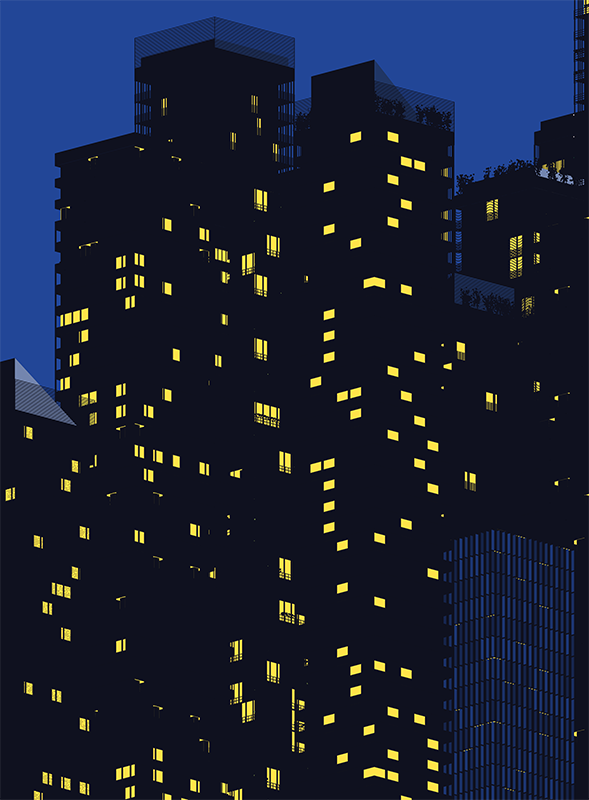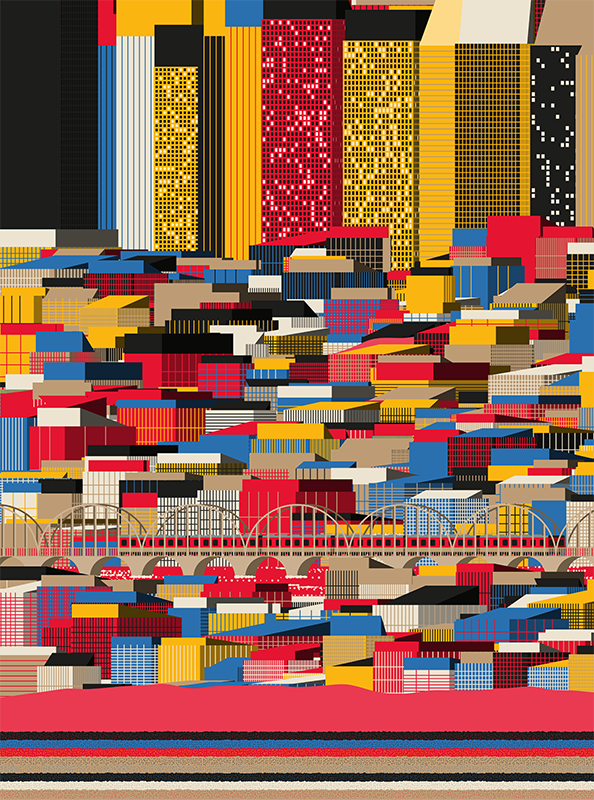As we dive deeper into the digital age, the intersection of art, technology and AI has created a new universe of creativity. This realm, where human craftsmanship blends seamlessly with the intricacies of digital artistry, is where artists like Studio Yorktown thrive.
Every week, nft now Next one reveals a new artist from our curated list of emerging talents who have caused a stir in Web3. This week we are excited to present Studio Yorktown.
studio Yorktown
Kwame Bruce Busia, better known as Studio Yorktown, is a visionary artist and creative entrepreneur who combines the worlds of design, architecture and digital art with blockchain technology. Yorktown entered the arena of NFTs and crypto in 2016 and emerged as a pioneer, pushing the boundaries of artistic expression and redefining how art can be created, owned and traded.
His first breakthrough came notably with the launch of his project ‘Tenement’ on Async Art. This initial success, combined with his explorations on platforms such as fxHash, has allowed him to dive deep into the intersection of art and technology. During that time, he discovered Andreas Rau’s project ‘Loom’, which inspired him to dive into coding with p5.js and explore the Tezos blockchain. Using their new coding skills, they created their first collection ‘Sabler’ on the fxHash platform. Since then, the artist has continued to explore and create with code, pushing the boundaries of generative art and NFTs, profoundly transforming his artistic practice and connecting with a global audience.
The artist’s process is anchored by a combination of sketching, systematic planning and experimentation. His work is known for an array of architectural landscapes, using a vibrant palette and diverse geometric shapes to bring cityscapes and abstract structures to life.


We had the opportunity to ask Studio Yorktown a few questions about NFTs and its artistic process.
nft now: how did you get started with NFTs?
Studio Yorktown: I started my journey in NFTs fueled by a passion for cryptocurrency that emerged in late 2016. The underlying technology fascinated me and I was curious about its possible applications. At the same time, I had just started my company Studio Yorktown, where I focused on creating assets and products for digital artists.
As I explored deeper into the world of crypto, I started hearing a lot about NFTs. The concept intrigued me and I wanted to know more about this emerging technology and its connection to the art world. With a desire to merge my products with NFTs, I created an account on Rarible and applied across various platforms, though many of those early attempts were somewhat unsuccessful.
However, my first breakthrough came when I received an invitation to join Async Art. There I created my first project called “Tenement”, which was received in a way that exceeded my expectations. This success fueled my curiosity to explore more innovative ways to leverage the platform and transformative capabilities of NFT technology.
“It wouldn’t be an exaggeration to say that NFTs have changed my life and given me a newfound sense of purpose. I have seized opportunities, learned new skills and grown as an artist, using the power of NFTs to share my work with a global audience.”
studio Yorktown
nft now: How would you describe your art?
Studio Yorktown: My art style is a combination of many influences and approaches, mainly stemming from my background in architecture and as a graphic designer. Sometimes it’s technical, sometimes naive, or somewhere in between. For my graphic design work, I often draw inspiration from the mid-century modern style and the Swiss International style, which rely heavily on grid-based layouts.
“I think such influences have led to aesthetics and coding processes rooted in underlying grids and modularity.”
studio yorktown
While I don’t consciously adhere to any particular style, my artistic journey with generative art began with abstract and geometric compositions. I appreciate visual simplicity and the use of basic shapes, but I’ve been experimenting with more figurative pieces lately, trying to strike the right balance between mathematical precision and a well-crafted yet human look. Rather than trying to mimic natural media and texture, I prefer to try to find the perfect “tension” between precise geometric shapes and an artistic touch that conveys depth and emotion.
Craftsmanship is essential to me and I strive to pass on this value to collectors, despite working in the digital world. Although my medium is digital, I am committed to creating art that reflects a meticulous attention to detail and a sense of quality as a guiding principle.
Color also plays a vital role in my aesthetic expression. I prefer to make a bold impression with a carefully curated selection of a few colors at a time, rather than relying on many colors. Each color choice is intentional, as I try to convey emotions and the traces of experience through conscious color combinations.
nft now: what does your process look like? And where do you usually find inspiration?
Studio Yorktown: While each collection is unique, my process is often a combination of sketching, systematic planning, and experimentation with generative concepts. With every project, my overall vision is to create images that resonate visually and emotionally or connect with viewers through a sense of mood or memory.
“What if I could convey a sense of nostalgia through code?”
studio yorktown
While I like to work with a clear concept in mind, I always create space for the original idea to evolve organically as and when needed during the creative process. In this way, one is free to make unexpected discoveries and growth opportunities without compromising the original vision.
I usually start a collection with a “what if” question or a feeling. What if such a pattern or image could be created generatively? What if I could convey a sense of nostalgia through code? I’ll ask myself these kinds of questions to see if that curiosity is worth exploring further. I find a lot of inspiration in opposites, the big city versus the quiet city, noisy versus quiet, detailed versus simple and so on. I find great energy in exploring the tension between opposites, especially when one becomes the opposite. How can that kind of balance be expressed visually and elegantly when it comes to the randomness of generative code? This is something I am constantly exploring and trying to answer through my work.
Play is also an integral part of my process. I like to experiment with physical models like wooden blocks or toy bricks because they help me come up with new ideas. I get to explore shape, space, tension, balance, unexpected forms that end up directly or indirectly in sketches, which can later shape my designs.
Finally, once I’m clear on the idea and I have a general idea of how I’d code it, the part of the process I enjoy the most is the act of refinement. Whether it’s ironing out bugs, or finding a more elegant solution to a piece of code, or finding a more efficient or effective solution to a problem, I love incrementally improving results from the inside out. It feels like carving away a block of marble to reveal the shape within, except with code. It feels similar to writing where you can explain something in a simpler way, or find just the right word and improve readability. While the viewer may not perceive or be aware of the process of refinement, for me it is a way of expressing value, gratitude and respect for the viewer through the craftsmanship and quality of the intangible.

